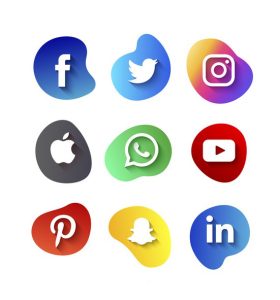Remote Content Management: Streamlining Your Digital Asset StrategyRemote Content Management: Streamlining Your Digital Asset Strategy
Remote Content Management: Streamlining Your Digital Asset Strategy
In today’s digital landscape, managing content remotely has become essential for many businesses. Remote content management allows us to create, edit, and distribute high-quality content efficiently, regardless of our team’s physical location. With tools and strategies that streamline workflows, we can enhance productivity and drive growth.

As we embrace remote work, the need for cohesive content management increases. This approach not only fosters collaboration among team members but also helps maintain consistent messaging across various platforms. By leveraging technology, we can ensure that our content remains relevant and engaging.
Understanding the benefits of remote content management can transform how we approach our Projects. We can respond quicker to market demands while maintaining high standards in our content production. This adaptability is crucial for staying competitive in an ever-evolving marketplace.
Establishing a Remote Content Team
Building an effective remote content team requires us to focus on creating a strong culture, defining Clear roles, and managing time differences. Each of these aspects helps ensure we work effectively and stay connected.
Creating a Collaborative Culture
A collaborative culture is vital for our remote content team. Encouraging open communication helps build trust and teamwork. Using tools like Slack or Microsoft Teams allows us to stay connected throughout the day.
We can organise regular check-ins to discuss progress and share ideas. These Meetings should be brief and focused, giving everyone a chance to contribute. Team-building activities also play an important role. Activities like virtual coffee breaks or online games help strengthen our relationships.
We should celebrate achievements, both big and small. Acknowledging hard work boosts morale. Together, we create an environment where everyone feels valued and motivated.
Defining Roles and Responsibilities
Clear roles and responsibilities help our remote content team function smoothly. Each member should know their tasks and how they fit into the larger project.
We can start by creating a project plan that outlines everyone’s roles. This plan ensures accountability and keeps us on track. Regularly revisiting these roles can also help us adjust as needed, keeping us aligned with our goals.
Setting clear expectations is crucial. We should identify deadlines and deliverables, making sure everyone understands what is required. This clarity reduces confusion and enhances productivity.
Managing Time Zones and Schedules
Managing time zones is a challenge for any remote content team. To navigate this, we must be flexible and considerate of each other’s schedules.
Using tools like Google Calendar can help us find suitable meeting times. We can rotate meeting times to accommodate everyone fairly. This practice fosters inclusiveness and respect for our diverse team.
Establishing core hours where most team members are available allows consistent collaboration. We should communicate our availability clearly and encourage colleagues to do the same. This approach strengthens our teamwork and keeps projects on track.
Facilitating Effective Communication and Project Management
Effective communication and robust project management are vital in remote content management. By using the right tools and processes, we can enhance collaboration, streamline workflows, and improve our overall output.
Utilising Modern Communication Tools
To stay connected, we must use modern communication tools like Microsoft Teams, Slack, and Zoom. These platforms allow us to conduct virtual meetings, share files, and keep everyone updated in real-time.
With features like chat applications, we can quickly ask questions or share ideas. It is essential to establish clear communication channels to reduce distractions and ensure that everyone is on the same page.
Optimising Content Planning and Publishing
A well-structured content strategy helps us manage our workload. Using tools like Google Docs and WordPress, we can collaborate on documents and prepare content for publishing.
Setting up a content calendar is crucial. This helps track deadlines, manage publishing schedules, and ensures we meet our goals. Regular check-ins with project management software like Asana or Trello can keep our tasks organised.
Streamlining Workflow with Technology
Technology simplifies our processes. We benefit from document management systems like Google Drive and Dropbox, which help us store files securely. Version control is important to track changes and avoid confusion.
Project management tools like Jira can help us allocate tasks and monitor progress. By streamlining workflows, we can increase efficiency and maintain quality in our remote content management efforts.
https://foottraffic.co.za/remote-content-management-controlling-creativity-from-anywhere/

